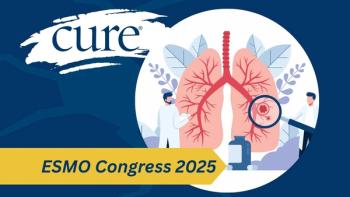
Bisphosphonates and breast cancer risk
Breast cancer prevention can be accomplished with tamoxifen, and this cuts the risk by about one-third to one-half, but very few women actually choose to go this route--in part, due to side effects. Dietary prevention studies have been negative as well, although with longer follow-up, we may find some benefit with very low-fat and high-vegetable diets. But what about bisphosphonates? These drugs are already approved for osteoporosis as well as for patients with bone metastases. There is now some evidence that these drugs might prevent recurrence in patients with early stage breast cancer and definitive studies examining this will be out soon. Dr. Rowan Chlebowski presented data from a series of studies in 151,000 postmenopausal women that were studying diet, hormonal replacement, vitamin D, and calcium replacement. He looked at the small fraction of women who happened to be taking bisphosphonates for low-bone mineral density, and using the appropriate statistical adjustments, he found that the risk of breast cancer was lowered by about one-third. This is very intriguing information about a completely new way to lower breast cancer risk, but this type of analysis cannot fully assure that other factors might account for the lowered risk. For example, these patients also weighed less than average, and while the analysis attempted to correct for many such factors, it is impossible to fully correct for unknown factors that may also be associated with bisphosphonate use. Still, this is a very compelling analysis and needs to be studied formally in a prospective trial, as a separate case-control study of patients in Northern Israel presented at the same session showed similar results.Individuals carrying BRCA1 or BRCA2 mutations are at very high risk of breast cancer, and MRI screening appears to be more sensitive in picking up cancers compared to mammogram in this population. During an SABCS session on Thursday, Dr. Ellen Warner reported on a large group of such patients who underwent regular MRI screening at Sunnybrook Regional Cancer Center in Toronto who were compared to a group of similar patients at several centers who only had mammographic screening. The purpose of this study was to verify that patients screened by MRI and mammography would be picked up at lower stages of cancer compared to mammography alone. This study did indeed show that the average tumor size with MRI screening was 9 compared to 18 millimeters and that more patients had in situ (pre-invasive) or stage 1 cancers with MRI screening, whereas those who had mammographic-only screening had more stage 2 and 3 cancers. While this study does not definitely prove that MRI screening will lead to better curability of cancer in the setting of BRCA mutations, it does provide more support for this approach--one that is already recommended by the American Cancer Society as well as other organizations.To read more articles from CURE's coverage of SABCS 2009, visit





